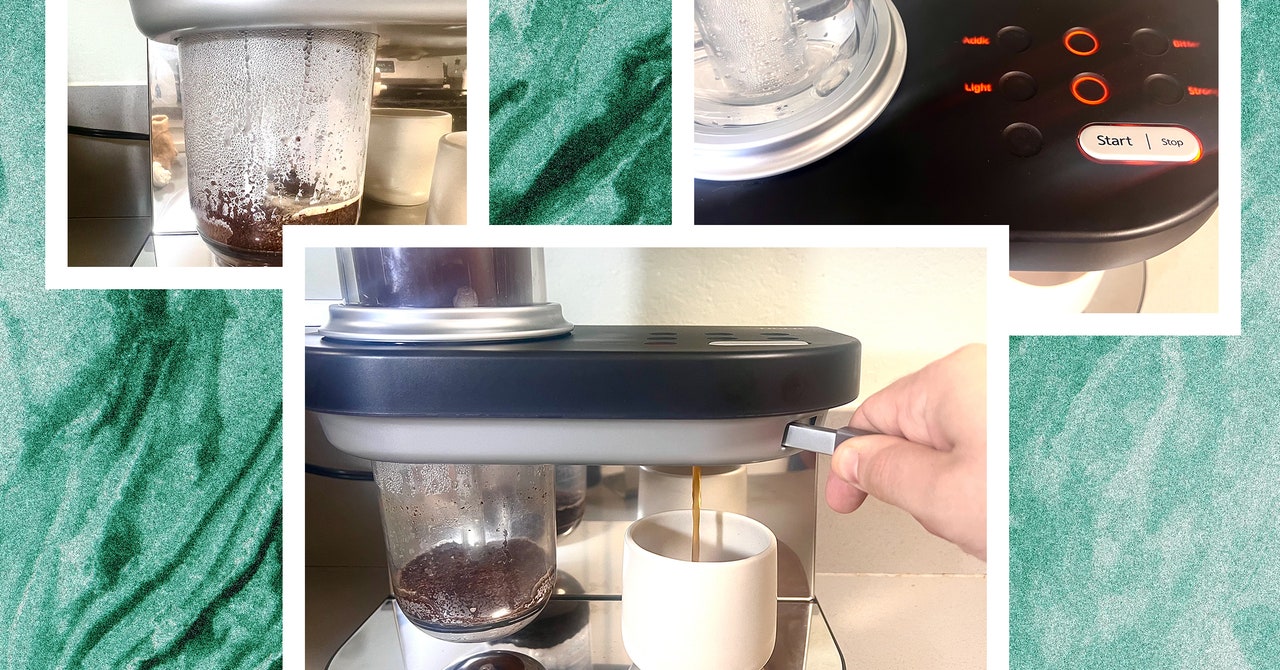
The fantastic thing about espresso stems from the limitless methods of personalizing it. However with the variety of fancy espresso machines, pour-over units, French presses, and bottles of chilly brew focus on the cabinets, it might get exhausting to decide on your most well-liked methodology on your kitchen. One mind-set about what’s finest on your house is to find out in case you’re making espresso only for your self or for an entire household. When you’re a solo dweller who’s in search of a brand new method so as to add some pleasure to your morning brew routine, there’s an attention-grabbing possibility that is value contemplating: the Siphonysta.
A siphon brewing system is a reasonably out of date method of getting ready espresso. The setup seems to be like a science experiment. A bulb of espresso grounds is heated with water after which will get sucked by means of a vacuum into one other chamber above it. It will probably typically take as much as 20 minutes for a cup to totally brew. No person in my contacts is ready 20 minutes for a single cup of espresso—possible the rationale it has fizzled in recognition. However when you have a little bit time to spare for cup of espresso, a siphon is seen as an awesome brewing methodology as a result of the vacuum expertise is thought to boost the aroma of the espresso.
Selecting Up the Tempo
Tiger’s Siphonysta is the primary electrical siphon machine that reduces that wait time to only about three minutes—immediately catapulting the siphon methodology into this century. Made in Japan, the Siphonysta might come off as a espresso machine for espresso nerds who wish to experiment with making espresso in all kinds of the way. Whereas that’s positively true, I truly contemplate it to be an awesome possibility for any solo espresso maker. When you stay alone, maybe with one different individual, and aren’t going to want to make a considerable amount of espresso every day, then this can be a nice technique to make superb espresso at house.
I examined the Siphonysta utilizing Verve Coffee Roasters’ Miraflores light roast and floor two scoops (the inside track is included with the Siphonysta) of entire beans in a Fellow Ode Brew Grinder Gen 2 on the 7 ⅔ setting. I additionally in contrast the style of the ultimate cup of espresso from the Siphonysta to that of a French press. For the French press, I modified the grinder setting for the beans to a 9. Espresso grounds for a French press are alleged to be a little bit greater, so I felt that was a good adjustment.
The Siphonysta is a reasonably small machine at about 12 x 9 x 14 inches. It may be a little bit tough to get used to. The highest and backside chambers every screw right into a spherical base, which you lock into the machine. I’ve needed to twist, flip, and finagle every of the chambers fairly a bit to lock them into the bottom. You additionally then want to position and twist a dome onto the highest chamber. If all of those aren’t finished exactly, the machine won’t work correctly. When you do it for a number of days, you begin getting the grasp of it, though I nonetheless really feel that this side of the machine must be rather more streamlined.
The physique of the machine, which has a matte black exterior, presents itself as stable and dependable, though the 2 plastic chambers trigger me a little bit little bit of concern with sturdiness, particularly contemplating the entire nuances essential to maneuver the components into place. The chambers are made from a plastic that doesn’t appear to be of the best high quality. I really feel that if I have been to by chance drop one among them onto the ground, they’d crack, immediately making the entire machine nonfunctional.
Inside Workings
The Siphonsyta works by including water to the highest chamber and the espresso grounds to the underside chamber, above the filter, which sits within the backside chamber. The machine comes with a steel stand you can place the underside chamber into to maintain it regular whilst you’re pouring the grinds in. You fill the water to the one-cup line or two-cup line, which is barely multiple cup.
{Photograph}: Andrew Watman







